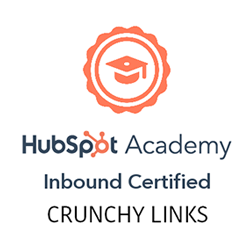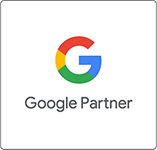Author’s note: We analyzed of 61,000 keywords and 17 million page views to understand where content really plays in the sales funnel. What’s below is the results of our analysis.
Look, we’re going to be straight with you. One of our biggest pet peeves is crappy content. Garbage in = garbage out, and there be some MAD garbage in these Internet streets. We want marketers to stop pumping garbage content (and to stop blaming clients, lack of budget, or lack of time for crappy results).
So, we decided to do the hard work, so you can get off the content hamster wheel and start producing content that’s going to get results.
Step 1: Stop using content like a horse pill to combat a virus
If you aren’t using content for its intended purpose, it’ll be about as effective as horse worm tablets fighting a world ending, pandemic inducing virus.
You want content to be valuable? First you need to know where the value is. And spoiler alert: it’s not where everyone says it is. We took a look at landing pages and user metrics comprising of 17 million pageviews, 7 million sessions, and a metric crap ton of time. And we found where informational content plays a part at each part of the sales funnel.
How much presence does informational content have in each part of the sales funnel?

You notice the top of the sales funnel ISN’T where content plays the largest part? It’s in assisted conversions.
Assisted Conversion: The interactions that a customer has with a website leading up to a conversion, but not the final interaction. AKA, a hockey assist.
Here’s where we’ve seen content statistically play the biggest part: A user has an issue, so they go looking for answers. And, oh, what do you know! They found your brand. Maybe it was from an ad, or maybe you just have a Rockstar SEO on your hands that ranked a product page. Either way, that’s just neat-o. But oh no! Now they have another question – and oh look! Our favorite brand (you) to the rescue again! Except this time, they loved your blog/faq/video/infographic so much, they’re going to check out that service/product you’ve been trying to sell them to see if it’s a fit. And holy-product-market-fit, Batman! It is! They then convert. And who get’s all the glory? The product page. Why? Because people aren’t tracking assisted conversions. Which is exactly what your content just produced.
Step 2: Let’s get content to play its rightful part.
There’s two things we really need to understand about how content performs on the digital playing field.
- We need to know which content types thrive in which part of the sales funnel, so you’re not using a scalpel when you need a hammer.
- We need to help writers help us. The value starts with the value you place in helping the writer provide the best content.
Let’s look at what types content play what part where.

We need to know which content types thrive in which part of the sales funnel, so you’re not using a scalpel when you need a hammer.
We broke down the 61,000 + keywords we looked at across several different industries (ecom, saas, finance, medical, legal, design) to see where they played the best part.
We found that informational keywords – those ngrams including phrases like: “how, what, when, where, why, is, guide, advice” – tended to play the largest part in decision making content. Breaking it down even further, there’s a big opportunity for content creators, as the majority of these types of keywords are lower in difficulty (meaning bigger brands aren’t investing creating content around them) and competitive density (meaning there’s not a lot of noise at the top of search results – think answer boxes, ads, knowledge panels, etc).
One other thing you’ll notice about informational content – most brands aren’t actively bidding on them because there’s low volume. Meaning if they do, they’re using generic messaging that isn’t giving the user what they want. That’s where you can come in.
When looking at topics that were more commercial in nature – meaning ngrams that included comparative words and phrases – that’s where we found the most competition amongst larger brands, and way more noise in search results. That being said, the cost per click on those terms are fairly affordable (see: $15/click or less). So if we were a content team, we’d look to partner with the paid team to create landing pages specific to those queries. Then you can retarget them for more affordable conversions later. End result: content creators look like heroes, and the paid marketers get better results. Everyone wins.
We need to help writers help us.
Look, how many times do you send a team of writers a fat list of keywords or topics, and say “Make it work?” Guess what? They hate that. Shocker, right? So let’s be better.
You know what’s better? An actual outline that would give them enough of a guard rail to color inside the lines, with enough context to be able to just write instead of having to research.
Wouldn’t it be cool if you gave a writer what Google recognizes from competing content, what sub topics were most talked about amongst competitors, and what questions a writer would need to address? (Pro tip: Our writing team loves this. Our customers’ writing teams love this. Our guess is your content team would love this too).
The problem is, most marketing specialists don’t have time to do this manually. It usually takes about 4 – 5 hours or so a week. We get it. But if we want a real cure to our content illness, we got to get off the horse pills of content creation and give our writers something they can sink their teeth into. So we created an API to help with this. If you want to supercharge your content team, and help them help you, check out Crunchy Content. Get connected directly into Google’s NLP processing platform, find out what competitor sub-content Google is rewarding, and what questions Google thinks are algorithmically connected to your query. Oh, and you can compare it to your own landing page if you just want to check out what you could fix on your own stuff.
Step 3: Get off the pill
Let’s have a heart-to-heart, shall we? We’re tired of terrible content. You’re tired of terrible content. We’re both tired of pissed off customers who are disenfranchised with digital marketers (and terrible content). Now there’s a way to product great content fast. And now you have a great new KPI to help you measure the impact of your content (*cough* assisted conversions *cough*).
So let’s take a second, and commit ourselves to creating better content. Together. We can do this.









